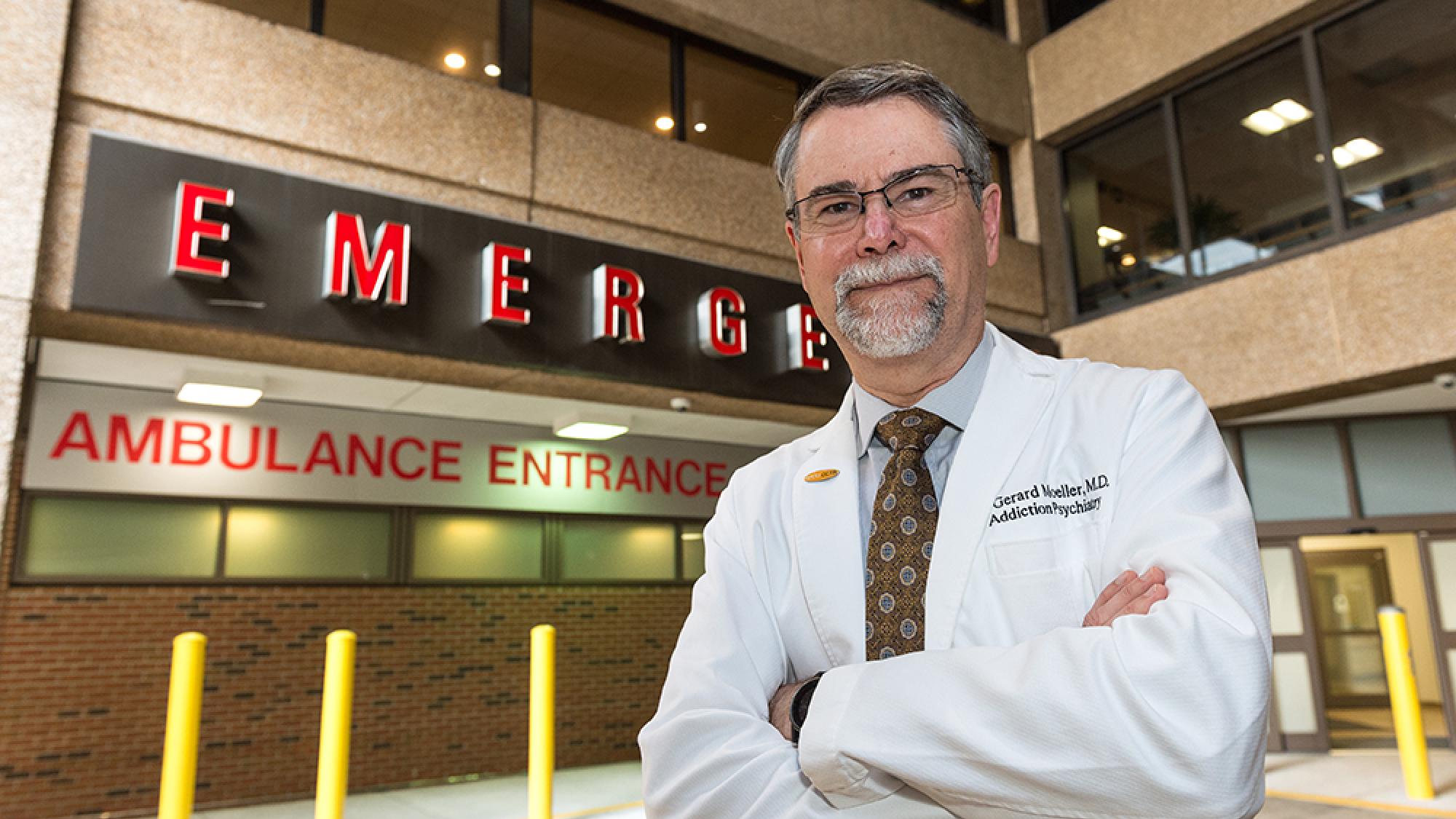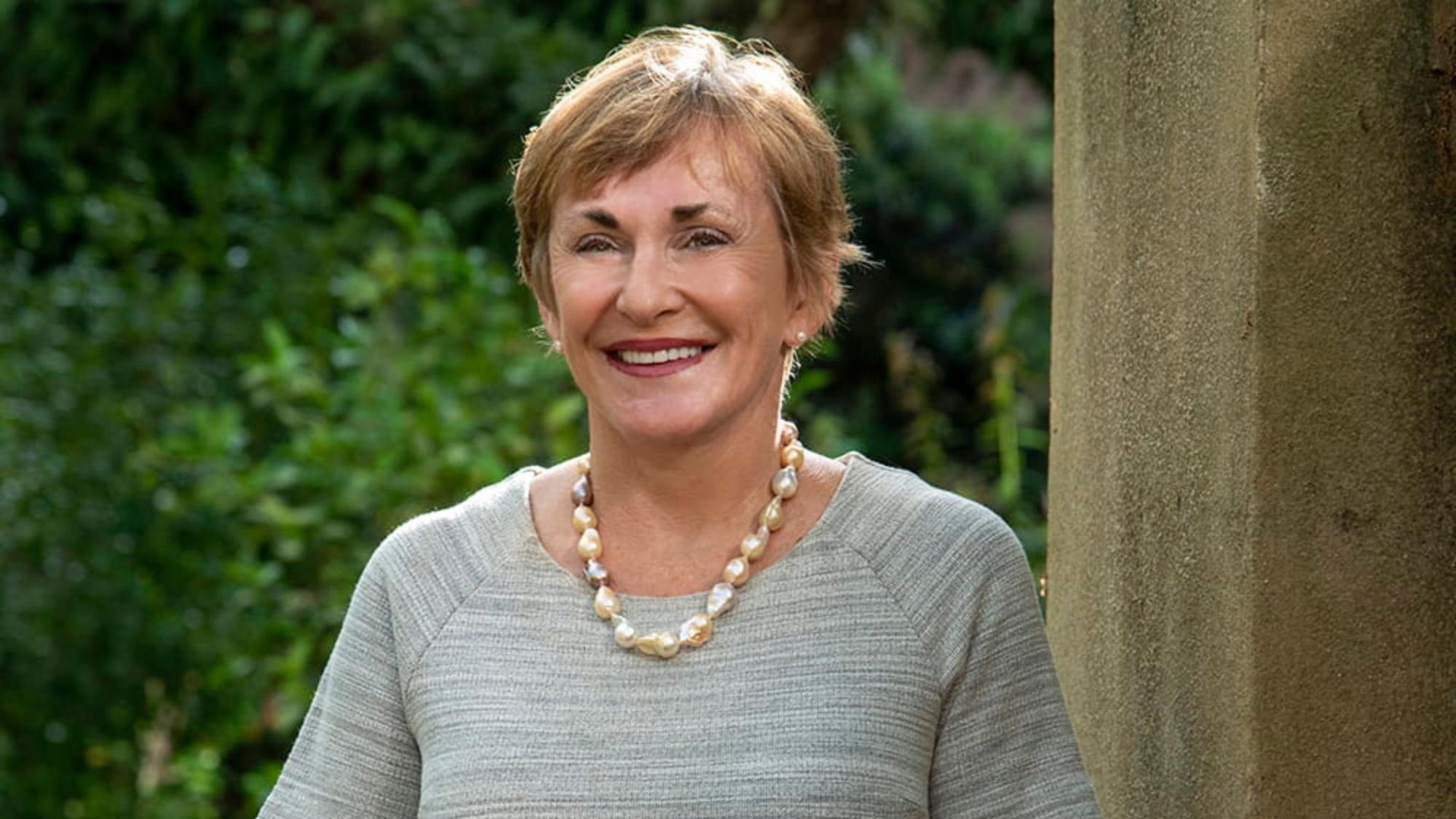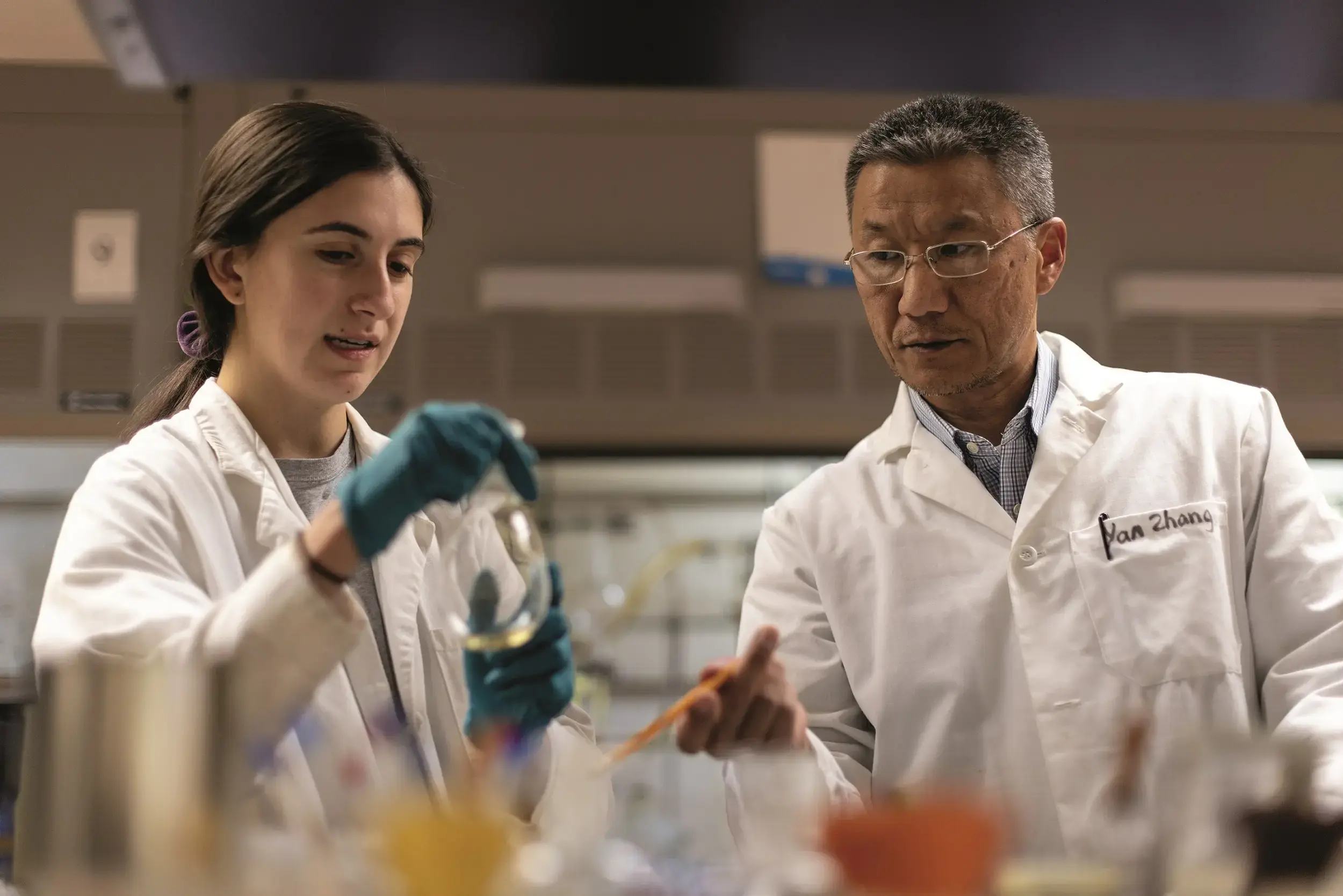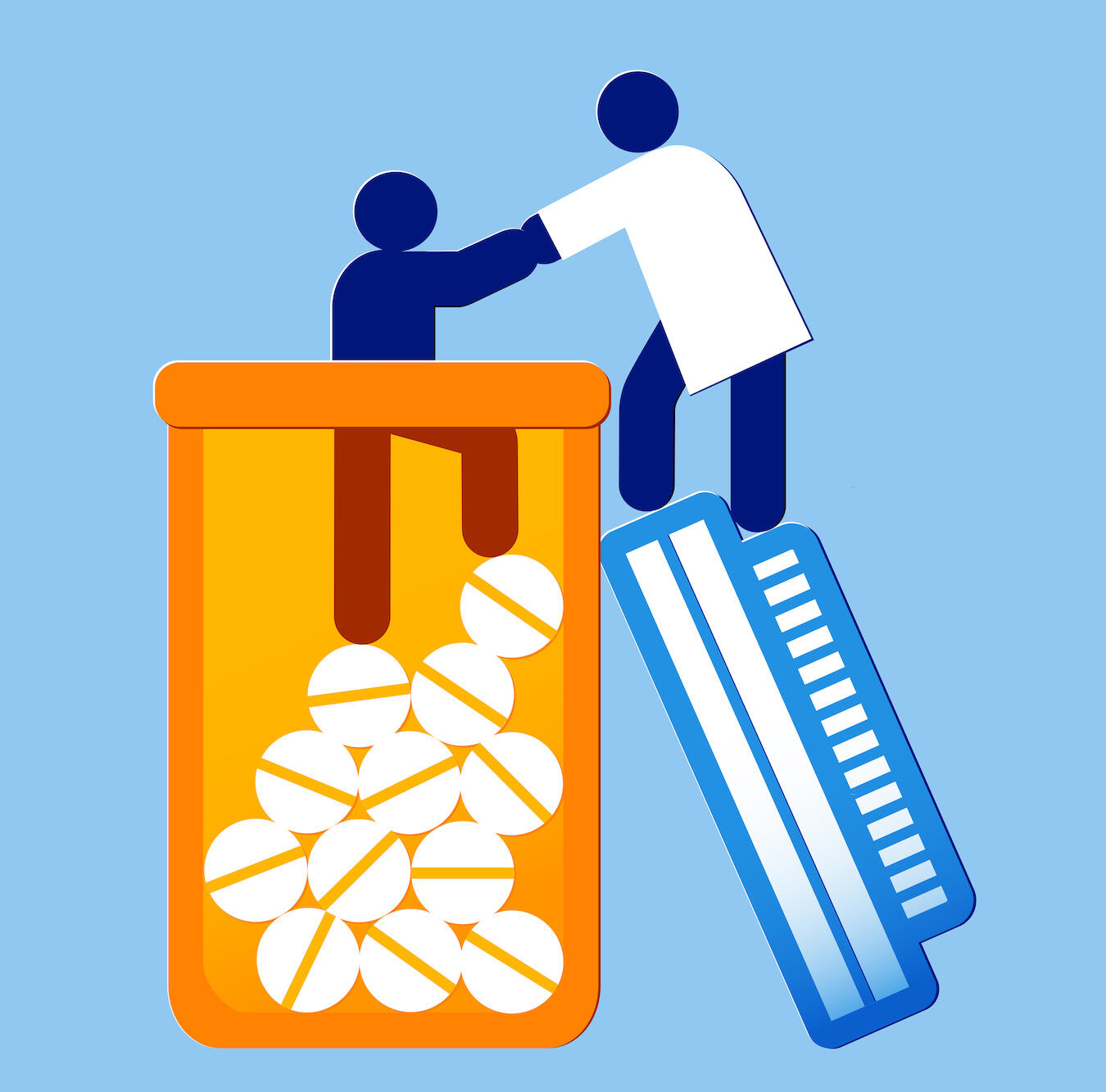Family physician advocates for effective management of opioid dependence and chronic pain
Alumnus nationally recognized for training physicians and medical students in safe opioid use and chronic pain management
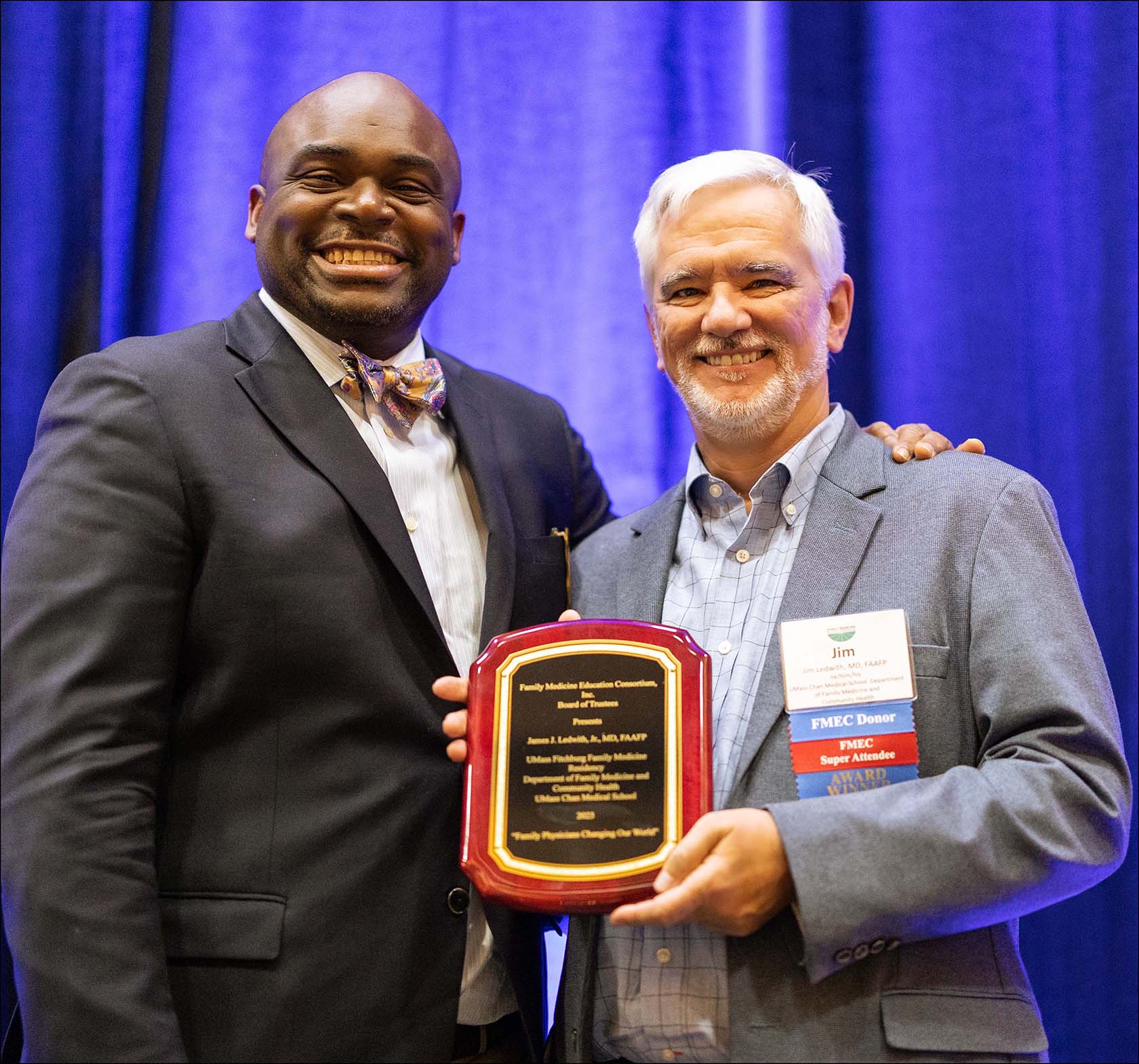
The Family Medicine Education Consortium honored James J. Ledwith, M’83, with the 2023 Family Physicians Who Are Changing Our World Award, in part for his advocacy for responsible care for patients who depend on opioid medication and his leadership in training physicians how to treat opioid use disorder.
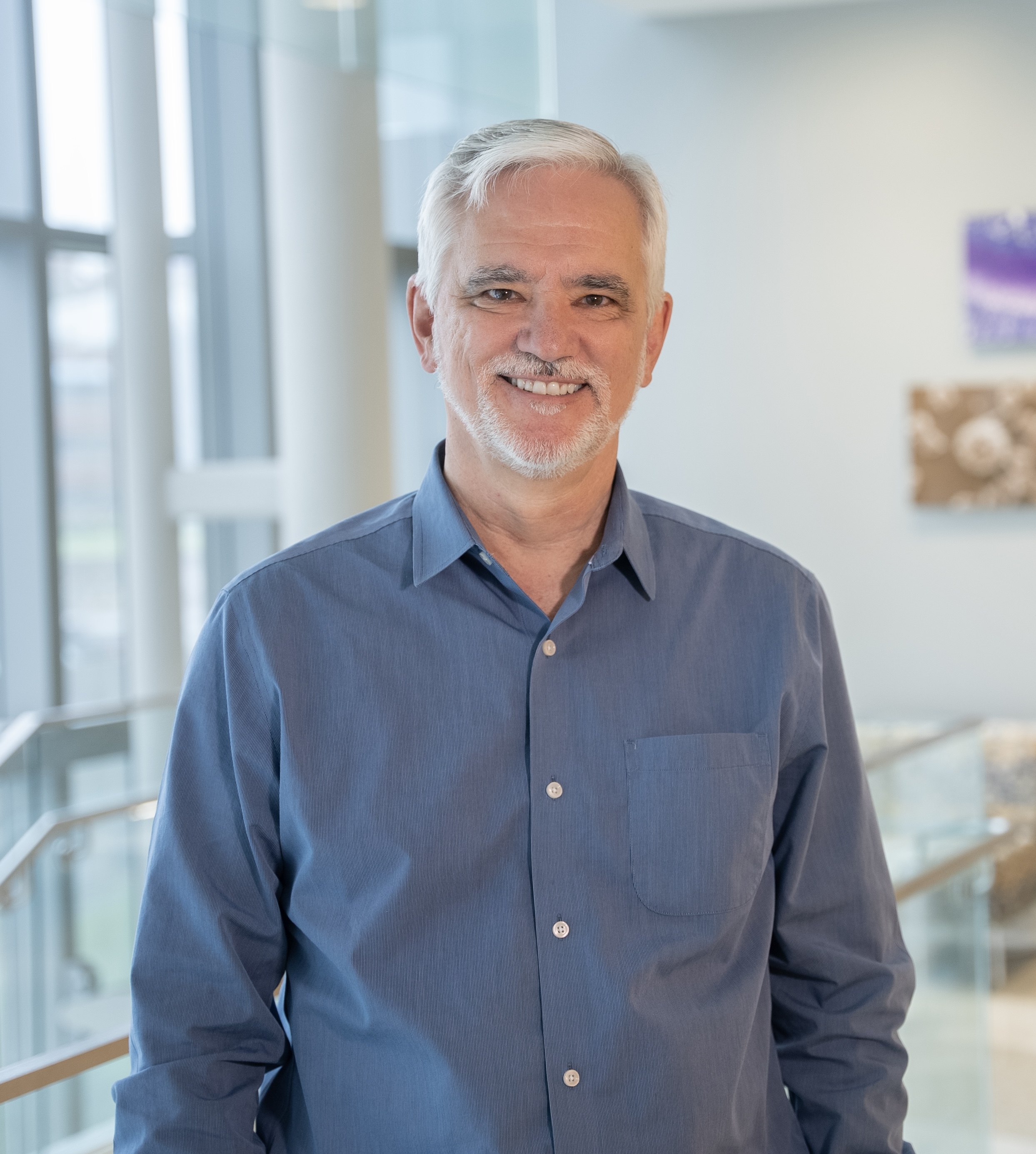 Shortly after James J. Ledwith Jr., M’83, settled into his role as a family physician in Tappahannock, Virginia, a member of his church approached him. She wanted to know if he would help manage her granddaughter’s detoxification from heroin. Ledwith agreed, the granddaughter traveled down from Washington, D.C., and they successfully managed her detox at her grandparents’ home.
Shortly after James J. Ledwith Jr., M’83, settled into his role as a family physician in Tappahannock, Virginia, a member of his church approached him. She wanted to know if he would help manage her granddaughter’s detoxification from heroin. Ledwith agreed, the granddaughter traveled down from Washington, D.C., and they successfully managed her detox at her grandparents’ home.
Soon after, Ledwith nearly lost a patient to opioid overdose. The patient was participating in a methadone treatment program to manage his opioid addiction, but the clinic was located an hour away in Richmond. When the drive became too much to manage, the patient weaned himself off, but later relapsed and overdosed on opioids. He ended up with a brain injury and spent decades in a nursing home.
It was the mid-1990s, and these cases were rare in Tappahannock, but Ledwith built on his prior training at VCU School of Medicine and studied to prepare for new challenges. He had heard of an opioid and oxycontin epidemic unfurling in Southwest Virginia.
“I remember a state police investigator came to our local medical society meeting,” Ledwith says. “He said vanloads of people would be coming to shop for pills in our office, and we should be wary of prescribing to just anybody.” That was eye-opening and gave attention to the need for safe prescribing practice.
Finding a way back to ‘normal’
When Ledwith moved in 2005 and joined the University of Massachusetts’s Fitchburg Family Medicine Residency as the program’s director, he came face-to-face with the crisis.
“It’s a small city of maybe 35,000 people, and we were seeing an overdose or a major complication from heroin use on a weekly basis in our community health center,” he says. “It was increasingly traumatic to the community, and to our physicians in training.”
Ledwith and his colleagues knew they needed a solution to the problem, which they found in buprenorphine, a synthetic opioid also known as Suboxone. The drug was released in 2001 as a treatment to reduce the cravings and withdrawal symptoms of opioid dependence. The partial stimulant saturates the brain’s receptors and blocks the effects of other opioids, dramatically suppressing cravings and dampening the high when drugs are misused.
The physicians arranged for training on the drug in late 2005 and, by the following summer, they began treating their first patients.
“Many of my patients said being on that medication was the first time they had felt normal in a decade or more,” Ledwith says.
A research report from the National Institute of Drug Abuse points to abundant evidence that methadone, buprenorphine and naltrexone all reduce opioid use and opioid use disorder-related symptoms, and increase the likelihood that a person will remain in treatment. Meanwhile, people with opioid use disorder who follow detoxification with complete abstinence are very likely to relapse, raising the risk for a fatal overdose.
“We’re saving lives with these medications — literally,” he says.
As Ledwith’s practice grew to include more patients with opioid dependence, he also saw a growing population of patients with severe, chronic pain. Then, Ledwith moved his practice to the UMass Chan Medical School campus and took over a panel of 50 patients on opioids for chronic pain from a retiring colleague. He realized many of the patients were dysfunctionally dependent on opioid pain medication, and buprenorphine therapy could be effective for them as well. (See sidebar for Ledwith’s recommendations for physicians who are treating pain and managing opioid dependence.)
While many physicians believed that dependent patients should stop taking the opioid pain medication completely, Ledwith says that can do more harm than good. Faced with cravings and withdrawal symptoms, many patients end up turning to pills from friends or from the street and risk of an overdose doubles — or even quadruples.
“If you're going to treat pain with opioids, you have to learn how to treat opioid use disorder, especially in small towns without opioid therapy clinics,” he says. “If you’re not, your patients may die because they can't get help within their own community.
“Also, it’s OK to use opioids to treat pain, but we need to learn how to do it safely and monitor our patients appropriately. When we do that, we can relieve suffering and prevent the consequences of opioid dependence.”
In 2023, the Family Medicine Education Consortium honored Ledwith with the 2023 Family Physicians Who Are Changing Our World Award, in part for his advocacy for responsible care for patients who depend on opioid medication and his leadership in training physicians how to treat opioid use disorder.
“Family medicine physicians are uniquely positioned to take care of every condition that we see, particularly in rural communities with limited access to specialists,” says Scott M. Strayer, M’94, H’97. “Training other family medicine doctors to intervene with patients who have opioid addiction embodies our department mission to meet the needs of the communities we serve.”
Ledwith credits his mentors in the Department of Family Medicine — Hugh Mayo, M.D.; Maurice Wood, M.D.; and David Marsland, M.D. — with inspiring him to not only become a primary care doctor, but to focus on communities with a high need for physicians.
“Dr. Ledwith’s commitment to community is evident and it’s why he has received this well-deserved national recognition,” Strayer says. “He’s had an incredible career training students, residents and physicians, and is a spectacular alumnus who we’re proud to have representing family medicine.”
 Shortly after James J. Ledwith Jr., M’83, settled into his role as a family physician in Tappahannock, Virginia, a member of his church approached him. She wanted to know if he would help manage her granddaughter’s detoxification from heroin. Ledwith agreed, the granddaughter traveled down from Washington, D.C., and they successfully managed her detox at her grandparents’ home.
Shortly after James J. Ledwith Jr., M’83, settled into his role as a family physician in Tappahannock, Virginia, a member of his church approached him. She wanted to know if he would help manage her granddaughter’s detoxification from heroin. Ledwith agreed, the granddaughter traveled down from Washington, D.C., and they successfully managed her detox at her grandparents’ home.
Soon after, Ledwith nearly lost a patient to opioid overdose. The patient was participating in a methadone treatment program to manage his opioid addiction, but the clinic was located an hour away in Richmond. When the drive became too much to manage, the patient weaned himself off, but later relapsed and overdosed on opioids. He ended up with a brain injury and spent decades in a nursing home.
It was the mid-1990s, and these cases were rare in Tappahannock, but Ledwith built on his prior training at VCU School of Medicine and studied to prepare for new challenges. He had heard of an opioid and oxycontin epidemic unfurling in Southwest Virginia.
“I remember a state police investigator came to our local medical society meeting,” Ledwith says. “He said vanloads of people would be coming to shop for pills in our office, and we should be wary of prescribing to just anybody.” That was eye-opening and gave attention to the need for safe prescribing practice.
Finding a way back to ‘normal’
When Ledwith moved in 2005 and joined the University of Massachusetts’s Fitchburg Family Medicine Residency as the program’s director, he came face-to-face with the crisis.
“It’s a small city of maybe 35,000 people, and we were seeing an overdose or a major complication from heroin use on a weekly basis in our community health center,” he says. “It was increasingly traumatic to the community, and to our physicians in training.”
Ledwith and his colleagues knew they needed a solution to the problem, which they found in buprenorphine, a synthetic opioid also known as Suboxone. The drug was released in 2001 as a treatment to reduce the cravings and withdrawal symptoms of opioid dependence. The partial stimulant saturates the brain’s receptors and blocks the effects of other opioids, dramatically suppressing cravings and dampening the high when drugs are misused.
The physicians arranged for training on the drug in late 2005 and, by the following summer, they began treating their first patients.
“Many of my patients said being on that medication was the first time they had felt normal in a decade or more,” Ledwith says.
A research report from the National Institute of Drug Abuse points to abundant evidence that methadone, buprenorphine and naltrexone all reduce opioid use and opioid use disorder-related symptoms, and increase the likelihood that a person will remain in treatment. Meanwhile, people with opioid use disorder who follow detoxification with complete abstinence are very likely to relapse, raising the risk for a fatal overdose.
“We’re saving lives with these medications — literally,” he says.
As Ledwith’s practice grew to include more patients with opioid dependence, he also saw a growing population of patients with severe, chronic pain. Then, Ledwith moved his practice to the UMass Chan Medical School campus and took over a panel of 50 patients on opioids for chronic pain from a retiring colleague. He realized many of the patients were dysfunctionally dependent on opioid pain medication, and buprenorphine therapy could be effective for them as well. (See sidebar for Ledwith’s recommendations for physicians who are treating pain and managing opioid dependence.)
While many physicians believed that dependent patients should stop taking the opioid pain medication completely, Ledwith says that can do more harm than good. Faced with cravings and withdrawal symptoms, many patients end up turning to pills from friends or from the street and risk of an overdose doubles — or even quadruples.
“If you're going to treat pain with opioids, you have to learn how to treat opioid use disorder, especially in small towns without opioid therapy clinics,” he says. “If you’re not, your patients may die because they can't get help within their own community.
“Also, it’s OK to use opioids to treat pain, but we need to learn how to do it safely and monitor our patients appropriately. When we do that, we can relieve suffering and prevent the consequences of opioid dependence.”
In 2023, the Family Medicine Education Consortium honored Ledwith with the 2023 Family Physicians Who Are Changing Our World Award, in part for his advocacy for responsible care for patients who depend on opioid medication and his leadership in training physicians how to treat opioid use disorder.
“Family medicine physicians are uniquely positioned to take care of every condition that we see, particularly in rural communities with limited access to specialists,” says Scott M. Strayer, M’94, H’97. “Training other family medicine doctors to intervene with patients who have opioid addiction embodies our department mission to meet the needs of the communities we serve.”
Ledwith credits his mentors in the Department of Family Medicine — Hugh Mayo, M.D.; Maurice Wood, M.D.; and David Marsland, M.D. — with inspiring him to not only become a primary care doctor, but to focus on communities with a high need for physicians.
“Dr. Ledwith’s commitment to community is evident and it’s why he has received this well-deserved national recognition,” Strayer says. “He’s had an incredible career training students, residents and physicians, and is a spectacular alumnus who we’re proud to have representing family medicine.”
How to treat pain while managing opioid dependence
James J. Ledwith, M’83, is focused on training physicians, residents and medical students about safe opioid use and chronic pain management, and offers the following recommendations.
- Understand that for patients who are using pain medications properly, the safest thing may be for them to continue. But if they want to decrease their medication use, it’s essential to taper down the dosage while offering comprehensive pain management, including nonopioids like acetaminophen and ibuprofen, injection therapies, osteopathic manipulation, and acupuncture.
- Spend adequate time reviewing a patient’s medical history. “It can take hours to comb through a medical record and understand the reality of what happened to a patient, why they’re on medication, and whether they’re using it safely,” Ledwith says.
- Take advantage of existing tools to make it easier to manage opioid use. Ledwith is creating automated reminders to obtain toxicology screenings and annual controlled substance agreements that outline the risks and monitoring practices for patients.
- Prescribe Naloxone or Narcan, an antidote to opioid overdose, in case of an accidental overdose by the patient or a child in the home.
Tags:
